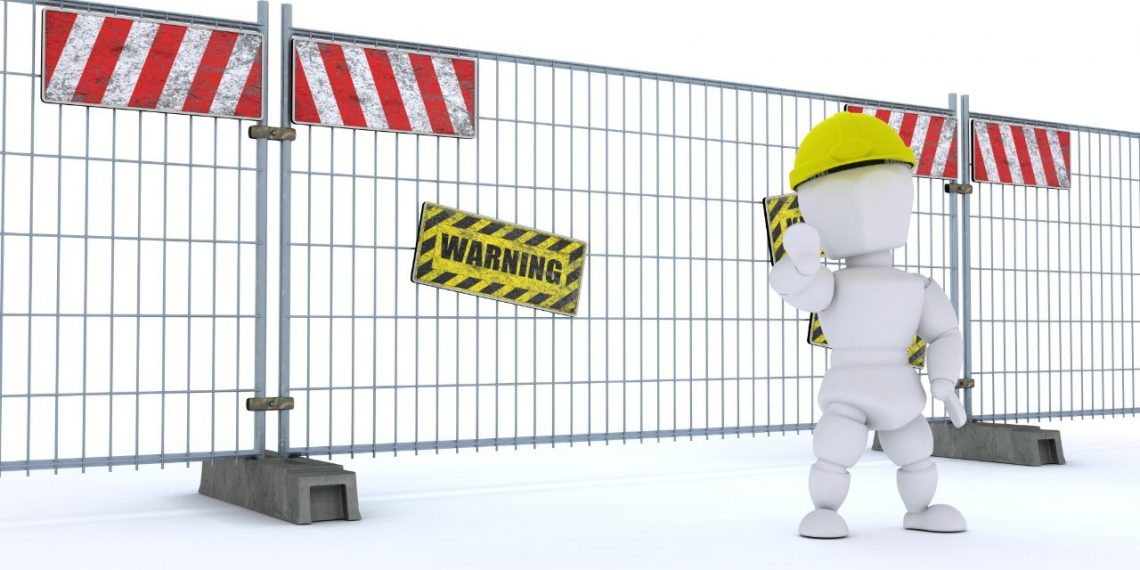If you are a website owner or a frequent internet user, you might have come across the ‘Deceptive Site Ahead’ warning while browsing the web. This warning message can be alarming and can potentially deter visitors from accessing your website.
In this article, we will explore what the ‘Deceptive Site Ahead‘ warning means and how you can fix it to ensure the safety and trustworthiness of your website.
What is the ‘Deceptive Site Ahead’ warning?
The ‘Deceptive Site Ahead’ warning is a security feature implemented by web browsers, including Google Chrome, to protect users from potentially harmful websites. When a website is flagged as deceptive, a warning message is displayed to alert users about potential risks associated with visiting that particular site. These risks could include phishing attempts, malware distribution, or other malicious activities.
Reasons for the ‘Deceptive Site Ahead’ warning
There are several reasons why your website might trigger the ‘Deceptive Site Ahead’ warning. Understanding these reasons can help you take appropriate measures to fix the issue. Here are some common causes:
Phishing or Malware: If your website is involved in phishing attempts or distributing malware, it will be flagged as deceptive. This could happen if your site has been compromised or if you have unknowingly included malicious links or content.
Unsecured Connections: Websites that do not have a valid SSL certificate or use insecure protocols (HTTP instead of HTTPS) are more likely to trigger the warning. Users expect a secure browsing experience, and unencrypted connections can put their data at risk.
Suspicious Content: Certain types of content, such as scams, fraudulent schemes, or illegal activities, can trigger the warning. It’s crucial to ensure that your website’s content is legitimate, transparent, and compliant with relevant laws and regulations.
How to fix the ‘Deceptive Site Ahead’ warning?
If your website has been flagged as deceptive and you want to remove the warning, here are some steps you can take:
Scan for Malware: Use reliable security tools to scan your website for malware or suspicious code. Remove any identified threats and strengthen your website’s security to prevent future compromises.
Secure your Website: Obtain an SSL certificate to enable HTTPS on your website. This will encrypt the data exchanged between your site and users, providing a secure connection. Ensure that all pages and resources on your website are loaded over HTTPS.
Check for Hacked Content: Regularly monitor your website for hacked or malicious content. Hackers can inject malicious code or links into your website without your knowledge. Implement security measures to detect and remove any unauthorized content promptly.
Submit a Review Request: If you believe your website has been mistakenly flagged, you can submit a review request to the search engine or browser responsible for the warning. Provide relevant information about your website’s legitimacy and the steps you have taken to address the issue.
Follow Best Practices: Adhere to webmaster guidelines and best practices provided by search engines. These guidelines cover various aspects such as content quality, user experience, and security. Complying with these guidelines will reduce the chances of triggering the warning.
Preventing the ‘Deceptive Site Ahead’ warning
It’s always better to prevent the ‘Deceptive Site Ahead’ warning from appearing in the first place. Here are some preventive measures you can take:
Keep Software Updated: Ensure that your website’s software, including content management systems, plugins, and themes, is always up to date. Regular updates often include security patches that address known vulnerabilities.
Use Reliable Hosting: Choose a reputable hosting provider that prioritizes security. A reliable hosting service will have robust security measures in place, reducing the chances of your website being compromised.
Educate Users: If your website allows user-generated content, implement moderation and monitoring systems to prevent malicious or deceptive content from being published. Educate your users about potential risks and encourage them to report any suspicious activity.
Implement a Web Application Firewall (WAF): A WAF can provide an additional layer of security by filtering out malicious traffic and blocking potential threats. It can help protect your website from common attack vectors, reducing the risk of being flagged as deceptive.
How to Fix ‘Deceptive Site Ahead’ Warning?
If you are a website owner or a frequent internet user, you might have come across the ‘Deceptive Site Ahead’ warning while browsing the web. This warning message can be alarming and can potentially deter visitors from accessing your website.
In this article, we will explore what the ‘Deceptive Site Ahead‘ warning means and how you can fix it to ensure the safety and trustworthiness of your website.
What is the ‘Deceptive Site Ahead’ warning?
The ‘Deceptive Site Ahead’ warning is a security feature implemented by web browsers, including Google Chrome, to protect users from potentially harmful websites. When a website is flagged as deceptive, a warning message is displayed to alert users about potential risks associated with visiting that particular site. These risks could include phishing attempts, malware distribution, or other malicious activities.
Reasons for the ‘Deceptive Site Ahead’ warning
There are several reasons why your website might trigger the ‘Deceptive Site Ahead’ warning. Understanding these reasons can help you take appropriate measures to fix the issue. Here are some common causes:
Phishing or Malware: If your website is involved in phishing attempts or distributing malware, it will be flagged as deceptive. This could happen if your site has been compromised or if you have unknowingly included malicious links or content.
Unsecured Connections: Websites that do not have a valid SSL certificate or use insecure protocols (HTTP instead of HTTPS) are more likely to trigger the warning. Users expect a secure browsing experience, and unencrypted connections can put their data at risk.
Suspicious Content: Certain types of content, such as scams, fraudulent schemes, or illegal activities, can trigger the warning. It’s crucial to ensure that your website’s content is legitimate, transparent, and compliant with relevant laws and regulations.
How to fix the ‘Deceptive Site Ahead’ warning?
If your website has been flagged as deceptive and you want to remove the warning, here are some steps you can take:
Scan for Malware: Use reliable security tools to scan your website for malware or suspicious code. Remove any identified threats and strengthen your website’s security to prevent future compromises.
Secure your Website: Obtain an SSL certificate to enable HTTPS on your website. This will encrypt the data exchanged between your site and users, providing a secure connection. Ensure that all pages and resources on your website are loaded over HTTPS.
Check for Hacked Content: Regularly monitor your website for hacked or malicious content. Hackers can inject malicious code or links into your website without your knowledge. Implement security measures to detect and remove any unauthorized content promptly.
Submit a Review Request: If you believe your website has been mistakenly flagged, you can submit a review request to the search engine or browser responsible for the warning. Provide relevant information about your website’s legitimacy and the steps you have taken to address the issue.
Follow Best Practices: Adhere to webmaster guidelines and best practices provided by search engines. These guidelines cover various aspects such as content quality, user experience, and security. Complying with these guidelines will reduce the chances of triggering the warning.
Preventing the ‘Deceptive Site Ahead’ warning
It’s always better to prevent the ‘Deceptive Site Ahead’ warning from appearing in the first place. Here are some preventive measures you can take:
Keep Software Updated: Ensure that your website’s software, including content management systems, plugins, and themes, is always up to date. Regular updates often include security patches that address known vulnerabilities.
Use Reliable Hosting: Choose a reputable hosting provider that prioritizes security. A reliable hosting service will have robust security measures in place, reducing the chances of your website being compromised.
Educate Users: If your website allows user-generated content, implement moderation and monitoring systems to prevent malicious or deceptive content from being published. Educate your users about potential risks and encourage them to report any suspicious activity.
Implement a Web Application Firewall (WAF): A WAF can provide an additional layer of security by filtering out malicious traffic and blocking potential threats. It can help protect your website from common attack vectors, reducing the risk of being flagged as deceptive.
By taking these preventive measures and promptly addressing any issues that arise, you can minimize the chances of triggering the ‘Deceptive Site Ahead’ warning and provide a safe browsing experience for your visitors.
By taking these preventive measures and promptly addressing any issues that arise, you can minimize the chances of triggering the ‘Deceptive Site Ahead’ warning and provide a safe browsing experience for your visitors.




